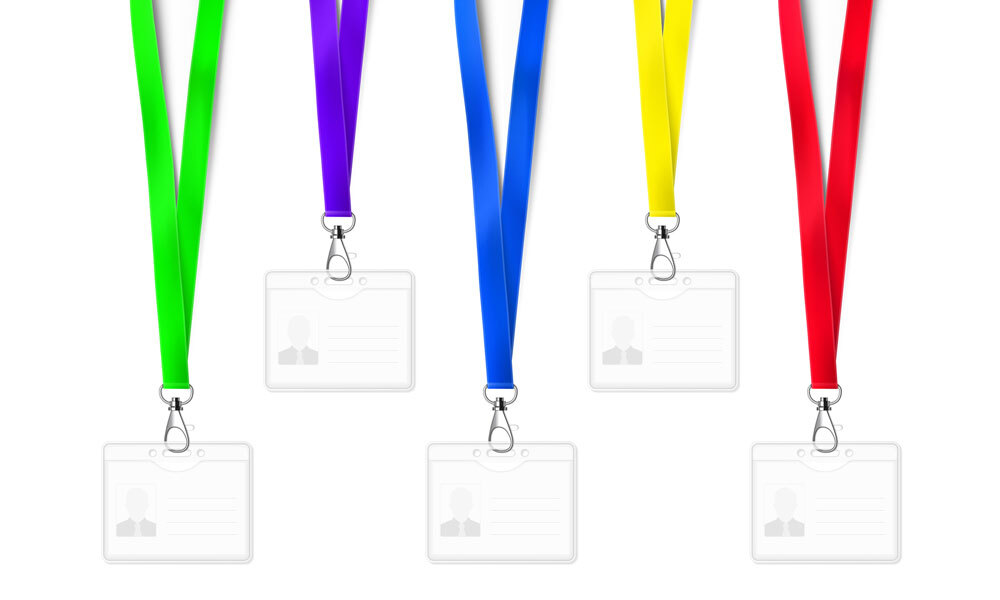
Color-Coded System Will Help In-Person Attendees Indicate Level of Comfort Socializing
Organizers of the HRSouthwest Conference are using a green-yellow-red lanyard system to help attendees share their comfort level when it comes to socializing with fellow participants. A simple glance can indicate if a person is up for a hug or prefers 6 feet of space at all times.
With attendees having various comfort levels around what socializing activities they’re willing to do at an in-person meeting, organizers of the HRSouthwest Conference—taking place in Fort Worth, Texas, in October—have decided to use a color-coded lanyard system to help participants easily see how to engage with others.
Brad C. Shanklin, executive director of the Dallas HR Management Association, which is organizing the conference, said the in-person event will provide a green, yellow, or red lanyard to participants so they can indicate their level of engagement comfort to others.
“We have not yet finalized our verbiage because things keep changing so much with the Delta variant, but basically, the green means, ‘I’m fine. I’m comfortable. Come give me a hug,’” Shanklin said. “The yellow means, ‘I’m not so comfortable. Maybe give me a fist bump and stay 4 to 6 feet away from me. I’ll have a mask on maybe.’ The red means, ‘If you can keep 6 feet from me, I’d appreciate it. I will have on a mask.’”
Shanklin said the idea for the color-coded system came from a board member whose church used a more involved color-coded wristband system. The organization liked that idea, but simplified it to mirror the green-yellow-red traffic signal system most people are familiar with and opted for lanyards over wristbands. Shanklin worried suit jackets might obscure bands.
“People can display their own comfort level—and most importantly, you can see it from a distance,” Shanklin said. “We’re trying to create a safe environment for you to feel comfortable and still network and make connections and do all those kinds of things that you do when you attend a conference.”
Color Coding Has Many Uses
In addition to the lanyard system, the organization is considering using color coding for other things, like reception tables. “If they’re at a green table, they may have 10 chairs,” Shanklin said. “If they’re a red table, they may have four chairs. So, people can perceptually feel comfortable and see what that looks like before they join.”
The association is also looking to their decorator to help people who want to maintain strict social distance feel more comfortable networking and is considering using floor signs to create conversation circles. “You can stand there and socialize in a circle, and we’ve already set a distance that’s safe for you to talk,” Shanklin said.
The event sends out an email every other week to discuss updates and safety protocols. Shanklin said news of the lanyard system has been well-received based on responses to those updates. Additionally, exhibitors he’s spoken with think it will make their time at the conference better, too.
“They all really like the colored lanyard idea because it will help them as an exhibitor to see, as someone walks by, where they are with things,” Shanklin said. “It could be a nice conversation starter. I have on a yellow one; you have a yellow one. It gives them something to talk about to break the ice.”
Attendees will choose their lanyards when they get to the conference. Shanklin said they plan to have plenty of lanyards in the three colors on hand and will donate unused ones to a local school. Attendees, if they change their mind while at the event and begin to feel more or less comfortable, can ask staff to swap out their lanyard.
The hardest thing about planning for this aspect of the conference is the changing regulations, which Shanklin and meeting staff are following closely. Right now, the Fort Worth Convention Center does not require masks, so the lanyard system makes sense. If anything changes, the organization will reflect that in their final plans and language used to describe the system.
“Two months ago, I felt a lot better about the green ones,” Shanklin said. “I was hoping that the green ones would be a little more socializing than I fear that they will be today, just because of the uncertainty of the variant. We are taking everything in consideration so that it’s safe. This event will be safe. We just want to make sure we are also giving people the opportunity to be as comfortable as possible.”
(realstockvector/iStock/Getty Images Plus)






Comments